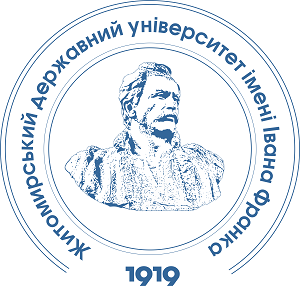SOIL DEGRADATION IN THE CONTEXT OF ARMED CONFLICT: A CONCEPTUAL FRAMEWORK
DOI:
https://doi.org/10.32782/naturaljournal.13.2025.32Keywords:
soil health, ecosystem resilience, land degradation, military disturbance, chemical contamination, remote sensing, sustainable management, risk assessmentAbstract
The large-scale military invasion of Ukraine has triggered an environmental crisis, dramatically intensifying pre-existing processes of soil degradation and introducing new threats to soil health, ecosystem function, and national food security. This review is highly relevant given the unprecedented scale of military disturbance, the diversity of affected landscapes, and the far-reaching impacts on agricultural production and ecological stability. The purpose of this work is to comprehensively synthesize current Ukrainian and international research on the impacts of military activities on soils, focusing on the mechanisms and feedbacks underlying war-related degradation. Methods include systematic literature analysis, integration of field and remote sensing data, and case study evaluation. The review analyzes four key dimensions of soil system change: physical disturbance (compaction, erosion, cratering), chemical contamination (heavy metals, explosives, oil products), biological decline (loss of microbial and plant diversity), and social disruption (land abandonment, reduced productivity, risks to livelihoods). The results show that warfare accelerates soil degradation through multiple interacting pathways, leading to cumulative impacts and the risk of ecological “regime shifts,” where soils lose resilience and recovery potential. Scientific novelty is provided by an integrated conceptual framework that explicitly connects physical, chemical, biological, and social feedbacks, drawing on both Ukrainian and international evidence.The practical significance lies in identifying major knowledge gaps and highlighting the urgent need for interdisciplinary, systems-based monitoring and adaptive management. The model and recommendations are applicable not only to Ukraine, but to all regions facing environmental impacts of armed conflict, and can inform evidence-based policy and restoration strategies.
References
Akhundov R. The environmental consequences of military activity. Res. Get. 2024. May. [Electronic resource]. URL: https://www.researchgate.net/publication/380356613THE (access date 30.06.2025).
Baliuk S., Medvedev V., Vorotintseva L., Shymel V. Problems of degradation of soils and measures on reaching its neutral level. Вісник аграрної науки. 2017. Vol. 95, № 8. P. 5–11. https://doi.org/10.31073/agrovisnyk201708-01.
Bonchkovskyi O.L., Boychuk V.V., Kononenko I.M., Morozova N.M., Bilyk O.V., Klymenko R.I., Baranenko I.V. Remote sensing as a key tool for assessing war-induced damage to soil cover in Ukraine (the case study of Kyinska territorial hromada). Ukrainian Journal of Remote Sensing. 2023. Vol. 13, № 2. P. 40–49. https://doi.org/10.34130/2313-0136.2023.13.2.40.
Bulba I., Drobitko A., Zadorozhnii Yu., Pismennyi O. Identification and monitoring of agricultural land contaminated by military operations. Scientific Horizons. 2024. Vol. 27, № 7. P. 107–117. https://doi.org/10.48077/scihor7.2024.107.
Greičiūtė K., Juozulynas J.A., Šurkienė G., Valeikienė V. Research on soil disturbance and pollution with heavy metals in military grounds. Geologija. 2007. Vol. 57. P. 14–20. [Electronic resource]. URL: https://shorturl.at/bMR6g (access date 30.06.2025).
Johnson S., Wang G., Howard H., Anderson A.B. Identification of superfluous roads in terms of sustainable military land carrying capacity and environment. Journal of Terramechanics. 2011. Vol. 48, № 2. P. 97–104. https://doi.org/10.1016/j.jterra.2010.10.001.
Krajnović Z., Smolek A. Impact of Military Activities on the Environment. Strategos. 2024. Vol. 8, № 2. P. 89–124. [Electronic resource]. URL: https://hrcak.srce.hr/324164 (access date 30.06.2025).
Ma Z., Zhang Y., Liu J., Zhang X., Liu X., Zhao Y., Liu Y., Meng Q. Spatiotemporal analysis and war impact assessment of agricultural land in Ukraine using RS and GIS technology. Land. 2022. Vol. 11, № 10. Article 1810. [Electronic resource]. URL: https://www.mdpi.com/2073-445X/11/10/1810 (access date 30.06.2024).
Petrushka K., Petrushka I., Yukhman Y. Assessment of the impact of military actions on the soil cover at the explosion site by the Nemerov method and the Pearson coefficient: Case study of the city of Lviv. Journal of Ecological Engineering. 2023. Vol. 24, № 10. P. 77–85. https://doi.org/10.12911/22998993/170078.
Pichtel J. Distribution and fate of military explosives and propellants in soil: A review. Applied and Environmental Soil Science. 2012. Vol. 2012, Article ID 617236. https://doi.org/10.1155/2012/617236.
Ricci M.E., Dain-Owens A.P., Anderson A.B., Howard H.R. Index of available research on military impacts. 2012. [Electronic resource]. URL: https://shorturl.at/KTvo7 (access date 30.06.2024).
Rodríguez-Seijo A., Fernández-Calviño D., Arias-Estévez M., Arenas-Lago D. Effects of military training, warfare and civilian ammunition debris on the soil organisms: An ecotoxicological review. Biology and Fertility of Soils. 2024. Vol. 60, № 6. P. 813–844. https://doi.org/10.1007/s00374-024-01835-8.
Vasarevičius S., Greičiūtė K. Investigation of soil pollution with heavy metals in Lithuanian military grounds. Journal of Environmental Engineering and Landscape Management. 2004. Vol. 12, № 4. P. 132–137. [Electronic resource].URL: https://www.tandfonline.com/doi/abs/10.1080/16486897.2004.9636834 (access date 30.06.2024).
Trokhaniak O. Impact of military operations on agricultural soils. Mechanization in agriculture & Conserving of the resources. 2024. Vol. 68, № 1. P. 24–26. [Electronic resource]. URL: https://stumejournals.com/journals/am/2024/1/24 (access date 30.06.2024).
Балюк С. А., Кучер А. В. Національне багатство України – чорноземи – під загрозою знищення. Голос України. [Electronic resource]. URL: http://www.golos.com.ua/article/366511 (access date 12.07.2025).
Голубцов О. Г., Сорокіна Л. Ю., Сплодитель А. О., Чумаченко С. М. Вплив війни росії проти України на стан українських ґрунтів. Результати аналізу. ГО “Центр екологічних ініціатив «Екодія». Київ, 2023. 32 с.
Зайцев Ю. О., Грищенко О. М., Романова С. А., Зайцева І. О. Вплив бойових дій на вміст валових форм важких металів у ґрунтах Сумського та Охтирського р-нів Сумської обл. Agroecological journal. 2022. № 3. С. 136–149. https://doi.org/10.33730/2077-4893.3.2022.266419.
Ландшафти війни: нові «врожаї» на українських полях. Укрінформ. 2022 [Electronic resource]. URL: https://www.ukrinform.ua/rubric-ato/3503152-landsafti-vijni-novi-vrozai-na-ukrainskih-polah.html (дата звернення 30.06.2025).
Лісова Н. О. Вплив військових дій в Україні на екологічний стан територій. Конструктивна географія і геоекологія. 2017. № 2. С. 165–173.
Пліско І. В., Романчук К. Ю., Крилач С. І. Механічна та фізична деградація орних ґрунтів унаслідок ведення воєнних дій в Україні. Вісник аграрної науки. 2023. № 10. С. 5–12. https://doi.org/10.31073/agrovisnyk202310-01.
Соловей В. Б., Залавський Ю. В., Лебедь В. В., Солоха М. О., Кучер А. В. Методичні засади картографування наслідків мілітарної деградації ґрунтів на рівні територіальних громад. Natural and geographical research. 2024. № 4. С. 22–35. https://doi.org/10.15407/ugz2024.04.022.
Тонха О. Л., Меньшов О. І., Літвінов Д. В., Бондар К. М., Глазунова О. Г., Літвінова О. А., Піковська О. В., Забалуєв В. О. Оцінка рівнів забруднення ґрунтів півдня україни, пошкоджених воєнними діями. Вісник Київського національного університету імені Тараса Шевченка. 2025. № 1. С. 30–38. http://doi.org/10.17721/1728-2713.108.04.







